Posts Tagged ‘books I adore’
October 21, 2009 @ 1:53 pm | Filed under:
Books 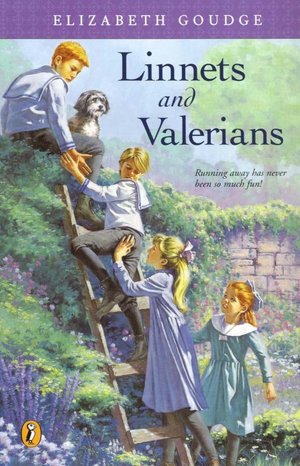
“You, child. What do you know of Greece?”
Betsy had not understood much of what had passed, but she remembered her nursery night-light burning in a little pan of grease and she said, “It is a bright light.”
Uncle Ambrose leaned back in his chair and stared at her and his jaw dropped. Then an expression of great tenderness came over his face and he said, “Child, you are right. A bright light. One of the brightest the world has known. But that you should know that, a child of your age. I am astonished. Out of the mouths of babes and sucklings.”
—from Linnets and Valerians by Elizabeth Goudge
One of our favorites. Beanie’s reading it now for the first delicious time. This scene popped into my head a couple of weeks ago when we were about to begin reading The Odyssey—a kind of family fun I heartily encourage everyone to try. The Iliad, The Odyssey, Beowulf, Idylls of the King, Macbeth, Plutarch’s Lives: heavy, hard, heady college stuff, right? Not necessarily. Honestly, I’ve had better success reading some of these Great Works with my children than I’ve had with certain Newbery-winning children’s novels. (Longtime readers will recall my laments about our inability to sustain Secret of the Andes or Red Sails to Capri as read-alouds.)
I wonder if one reason the Hard Stuff works well for us is that I feel no pressure to finish the whole thing, figuring that every little morsel of Homer or Shakespeare is a boost, a blessing, a bit of nourishment for mind or soul. You know how Flylady talks about every little bit of housework, even housework done clumsily, being a blessing for the home? I guess that’s my take on reading these literary classics with young children. Our best, deepest, most affecting discussions have been sparked by small passages from big works. Some weeks I may not read more than a score of lines from The Odyssey, a single paragraph from Plutarch’s Life of Pericles, but weeks, months, years later we’re still chewing on those big ideas.
From yesterday’s Pericles passage:
“For [Pericles] was never seen to walk in any street but that which led to the market-place and the council-hall, and he avoided invitations of friends to supper, and all friendly visits and intercourse whatever; in all the time he had to do with the public, which was not a little, he was never known to have gone to any of his friends to a supper, except that once when his near kinsman Euryptolemus married, he remained present till the ceremony of the drink-offering, and then immediately rose from the table and went his way. For these friendly meetings are very quick to defeat any assumed superiority, and in intimate familiarity an exterior of gravity is hard to maintain. Real excellence, indeed, is best recognized when most openly looked into; and in really good men, nothing which meets the eyes of external observers so truly deserves their admiration, as their daily common life does that of their nearer friends.”
Food for thought there for a great many meals.
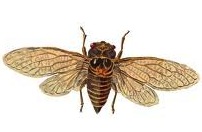
Related post: The Scent of Water.
August 25, 2009 @ 2:13 pm | Filed under:
Books “Jane, it’s the wreck of a fine man that you see before you,” he said hollowly.
“Dad . . . what is the matter?”
“Matter, says she, with not a quiver in her voice. You don’t know…I hope you never will know… what it is like to look casually out of a kitchen window, where you are discussing the shamefully low price of eggs with Mrs Davy Gardiner, and see your daughter…your only daughter …stepping high, wide and handsome through the landscape with a lion.”
Remember when you first realized the author of Anne of Green Gables had written a ton of other books besides the ones about Anne?
Maybe you found the Emily series next. Perhaps at times you harbored the heretical thought that Emily of New Moon was even better than Anne of Green Gables. You always changed your mind and gave the crown back to Anne because, well, there was something a wee bit prickly about Emily; she was terribly interesting, and you certainly admired her fire and her talent, but she wasn’t exactly bosom friend material. She seemed…hmm…a little cliqueish, perhaps, in her way; she wasn’t always out looking for kindred spirits like Anne. Indeed, she had enough difficulty managing the friends she already had. Emily didn’t need you: she had Ilse and Teddy and her art. Not to mention all that nonsense with Dean Priest, who, let’s be honest, kind of creeped you out from the start. And you knew it would be no use trying to warn Emily; that would just have put her back up.
Still, you were so glad you met her.
Perhaps it ended there, with Emily and Anne. Or maybe, just maybe, you were lucky enough to discover the others, the Pat books, the Story Girl duo, the one-offs, the story collections…and if you were very lucky indeed, maybe one day you met Jane of Lantern Hill.
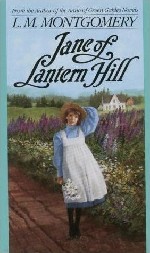 Oh, Jane, that practical, capable, matter-of-fact miss. At first it is easy to underestimate her: she seems to lack the spunk and impulsiveness that make Anne and Emily so entertaining. Anne has barely arrived at Green Gables when she’s blowing up at Mrs. Lynde; and Emily, my goodness, the way she bursts out from under the table quivering with rage at all the aunts and uncles criticizing her father after his funeral: could you help but applaud? But Jane seems so quiet, so put-upon, so cowed by her horrible grandmother. Sure, you can see she’s seething inside, but isn’t that the point? Anne and Emily don’t seethe: they erupt. You keep waiting for Jane to erupt, practically begging her to.
Oh, Jane, that practical, capable, matter-of-fact miss. At first it is easy to underestimate her: she seems to lack the spunk and impulsiveness that make Anne and Emily so entertaining. Anne has barely arrived at Green Gables when she’s blowing up at Mrs. Lynde; and Emily, my goodness, the way she bursts out from under the table quivering with rage at all the aunts and uncles criticizing her father after his funeral: could you help but applaud? But Jane seems so quiet, so put-upon, so cowed by her horrible grandmother. Sure, you can see she’s seething inside, but isn’t that the point? Anne and Emily don’t seethe: they erupt. You keep waiting for Jane to erupt, practically begging her to.
But Jane’s not the erupting type, and what makes her story so satisfying is that she isn’t a prodigy—not of feistiness, nor imagination, nor talent. She’s an average Jane: which means that if Jane can fix up the mess that is her life, anyone can.
When we meet Jane, she and her mother are living with the aforementioned horrible grandmother. At first Jane’s mom seems like a Mrs. Lennox type a la Secret Garden, and you’re half-expecting typhoid to kill her off. But no, there she is fluttering in for a goodnight kiss on her way to a party, and the tear in her eye belies her lighthearted manner. Mummy’s in pain, Jane knows, and she needn’t look farther than Grandmother’s scowl to see why.
Jane’s mother’s family is Old Money, though the neighborhood is decaying around the family mansion. Jane’s cousins got all the talent, brains, and looks, it seems (Jane’s relatives are somewhat hard to distinguish from the obnoxious family of another meek-but-seething Montgomery heroine, Valancy Stirling of The Blue Castle)—but anyone with sense can see that cousin Phyllis and the rest of them are snooty, unimaginative bores, and Jane’s the only one with any salt to her. She’s warmhearted enough to care about the plight of the orphan next door, and she’s alert enough to be interested in the bustle of the servants, particularly the kitchen staff. Mostly Jane longs for something to do, something or someone to take care of. This desire to be active, not passive, is at the heart of Jane’s story. As a small child she entertains herself by imagining “moon sprees,” flights of fancy involving a host of imaginary chums who help her polish the dull and tarnished moon into a gleaming silver orb. This rather quirky fantasy (the quirkiest thing about Jane, really) is an expression of her longing for warm camaraderie, a happy family circle, a cozy hearth, and some soul-satisfying work to do. In her mind all these things are wrapped up together: Jane longs for the warmth and liveliness of a loving family, and she wants to be one of the people involved in the domestic bustle that creates a cozy and welcoming home. Her grandmother’s mansion is as cold and sterile as the dark side of the moon—the place to which her imaginary creatures must go when they are sulky or lazy, and from which they return “chilled to the bone,” eager to warm themselves up with extra-vigorous polishing.
Until age ten, these imaginary moon sprees are Jane’s only outlet for the urge to do, to work, to transform what is cold and lifeless to something warm and bright. Her tyrannical, hypercritical grandmother makes all decisions having to do with Jane and her mother. The mother is like a butterfly trapped in a cage, miserable, helpless. Jane’s father is absent: she has been led to believe he is dead. Then one day a rather nasty schoolmate discloses a disgraceful secret: Jane’s father isn’t dead; he’s alive and well and living on Prince Edward Island. Her mother, claims nasty Agnes, left him when Jane was three years old.
“Aunt Dora said she would likely have divorced him, only divorces are awful hard to get in Canada, and anyhow all the Kennedys think divorce is a dreadful thing.”
Jane is appalled by this knowledge, but it galvanizes rather than paralyzes her. The passive child becomes a girl of action. Her first action is to demand truth—she marches into a tea party and asks the question point blank: “Is my father alive?” Her mother answers simply “yes,” and this truth sets Jane—gradually and eventually, and not without some pain—free. (more…)
UPDATED 2012: Thanks to the tireless efforts of HarperPerennial’s Jennifer Hart and the Betsy-Tacy Society, all of Maud Hart Lovelace’s Deep Valley books are now back in print. They’ve been reissued in beautiful editions with vintage illustrations, photographs, and introductions by authors who cherish the Betsy-Tacy books, including Judy Blume, Anna Quindlen, Meg Cabot, Mitali Perkins, Laura Lippman, and yours truly. 🙂 I’ve written about the entire series (with a chronological list) here.
The post below was written in early 2007, when many of Maud’s books were going out of print.
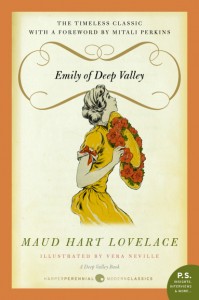 It’s almost hard for me to believe, now, that I grew up without Betsy Ray and her Deep Valley friends. I never heard of the Betsy-Tacy books until 1994, when I was a young staffer at HarperChildren’s, and the galleys for the reissues—the very editions that are now going out of print—began to float across my desk. You never saw a happier little coffee-fetcher than the girl I was, newly married and soon to be expecting baby Jane, sitting in my cubicle devouring those galleys and getting paid for it. Not paid a whole lot, mind you, but still.
It’s almost hard for me to believe, now, that I grew up without Betsy Ray and her Deep Valley friends. I never heard of the Betsy-Tacy books until 1994, when I was a young staffer at HarperChildren’s, and the galleys for the reissues—the very editions that are now going out of print—began to float across my desk. You never saw a happier little coffee-fetcher than the girl I was, newly married and soon to be expecting baby Jane, sitting in my cubicle devouring those galleys and getting paid for it. Not paid a whole lot, mind you, but still.
Where had Betsy Ray been all my life?
Clearly she was a kindred spirit of the likes of my beloved Anne and Laura. I loved her instantly and passionately, right down to her gap-toothed smile. My own dear mama has the same smile, and I could picture Betsy’s grin exactly. (I would have it too, but for the junior-high braces.)
I had taken that job because I wanted to write, and I hoped working in a publishing house would open some doors for me. (Happily, it did.) In the evenings I would go home to the bitsy three-room Queens apartment in which Scott and I began our married life, and the whole scene was so very Betsy-and-Joe I could hardly contain myself. Betsy’s bird print above her writing desk (Uncle Keith’s trunk) reminded me of the picture I’d hung on the wall beside our computer: a sepia-toned print of a stone doorway between a courtyard and a garden, taken at a monastery we’d passed through briefly on our honeymoon. That doorway spoke to me of all the possibilities that lay on the other side. Step through, it beckoned, and see what surprises await you down these paths.
Betsy would have understood just how I felt.
Even little tiny Betsy, the five-year-old or the ten-year-old: she knew all about the fun of discovering what lay over the Big Hill or alongside the downtown streets. Her cheery disposition, her impish sense of humor, her fierce loyalty, her quarrelsome streak—she was a real and whole person, and when I discovered I was expecting a baby, I couldn’t wait, couldn’t WAIT, to share Betsy with her. Oh, but what if she were a he? Well, then, his sister. Surely, surely, there were girls in my future, my own little Betsy and a Tacy and an Anne and a Jane-of-Lantern-Hill. Right? Right?
When the late-1990s reissues came out, I got to take copies home to lay in wait for the passel of children I hoped to have. And here they are, a passel indeed, and as diehard a bunch of Betsy-Tacy fans you’ll never see—except perhaps in the Edmisten house. And, um, the Cottage. And at Dumb Ox Academy. And okay, fine, in hundreds of other homes around the world.
But hundreds of homes is not enough, not enough to generate new print runs in a world of bottom-lines. And so we’re in danger of having to say bye-bye Betsy. Will the day come when my daughters fight over who gets to have mom’s collection?
There’s one book I won’t let them fight over.
I bought a bunch of copies just in case it, too, disappears, as will likely be the case one of these days. Maud Hart Lovelace’s most beautiful novel, Emily of Deep Valley, takes place in the same Minnesota village as the Betsy-Tacy books, and indeed Betsy makes a cameo appearance. Emily wasn’t part of the original relaunch plan, and when I left my job at HarperCollins to stay home with the due-any-minute Baby Who Would Be Jane, I did so with a photocopy of Harper’s library copy of Emily of Deep Valley in my backpack—a gift from one of the editors on the next floor.
Two years later the same editor sent me, triumphantly, an actual book. She’d been successful in lobbying for the reissue of Emily of Deep Valley, and I could kiss her for it. If you haven’t read this book, oh what a treat you are in for. Emily is the kind of character we don’t often see in these days of “you have to do what’s right for you.” What seems “right” for Emily, devoted scholar, is a college education like the rest of her high-school chums. But she lives with a very elderly grandfather, and somehow, somehow, she can’t bring herself to leave him alone. That, her conscience whispers, wouldn’t be right.
Sometimes, you see, “right for you” isn’t the same as just plain Right.
Doing the real right thing, Emily finds, is often the hardest thing. She also finds out that the Right Thing can be like a doorway, and when you step through it, you find beauty on the other side, beauty in places you never knew existed.
That’s why I have a stack of Emily of Deep Valley tucked away for my children. She mustn’t disappear, this strong and gentle young woman who understands that love means sacrifice and cheerfulness, and the kind of love that cheerfully sacrifices blesses the giver a hundredfold. I can’t think of a finer role model for my young brood—not even Betsy or Anne or Laura.
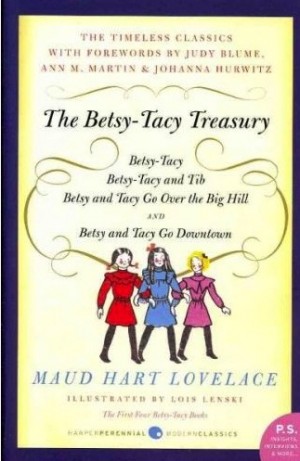
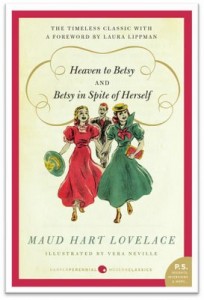
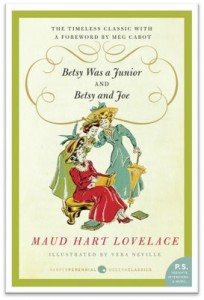

Related posts:
Heaven to Betsy! High-school-and-beyond books being reissued! (Sept 2009)
Betsy and Tacy Go Over the Big Hill
Betsy-Tacy booksigning at ALA Midwinter
Betsy-Tacy e-books!
The Betsy-Tacy Songbook
Interview with Mitali Perkins, Jennifer Hart, and me about Maud’s books
Photos of my visit to the real Deep Valley, as chronicled by Margaret in Minnesota
Why I love Carney
A Reader’s Guide to Betsy-Tacy
It’s Not My Turn to Look for Grandma by April Halprin Wayland, illustrated by George Booth.
Dawn was just cracking over the hills. Ma was splitting kindling on the back porch.
“Woolie!” she called out. “Where in the hickory stick is Grandma?”
“Dunno,” said Woolie. “It’s not my turn to look for Grandma!”
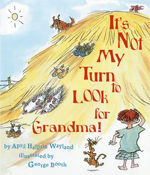 I’ve been reading this book to my kids for eight or nine years, and it still makes us all giggle. April Halprin Wayland (author of another of our family favorites, the quiet and lovely To Rabbittown), depicts this quirky backwoods family with wit and warmth, and George Booth’s illustrations are a hoot. Ma, a hardworking backwoods mother, needs Grandma’s help and keeps sending the kids to fetch her—but Grandma’s too busy sliding down the haystack with her dirty old dog, or doing something similarly outlandish. She’s never too busy, however, for a banjo band…
I’ve been reading this book to my kids for eight or nine years, and it still makes us all giggle. April Halprin Wayland (author of another of our family favorites, the quiet and lovely To Rabbittown), depicts this quirky backwoods family with wit and warmth, and George Booth’s illustrations are a hoot. Ma, a hardworking backwoods mother, needs Grandma’s help and keeps sending the kids to fetch her—but Grandma’s too busy sliding down the haystack with her dirty old dog, or doing something similarly outlandish. She’s never too busy, however, for a banjo band…
The rollicking text is a joy to read aloud. The writing is fresh and lively, and the characters are pure originals—especially that dirty old dog and a pair of disreputable porcupines. George Booth’s art, which would be hilarious even without the words, captures them perfectly. If I had to narrow down our picture book collection to ten titles (horrific thought!), this one would make the cut for its never-fail ability to invoke the belly-laughs I love.
For more picture-book recommendations, visit my Booknotes page.


 Oh, Jane, that practical, capable, matter-of-fact miss. At first it is easy to underestimate her: she seems to lack the spunk and impulsiveness that make Anne and Emily so entertaining. Anne has barely arrived at Green Gables when she’s blowing up at Mrs. Lynde; and Emily, my goodness, the way she bursts out from under the table quivering with rage at all the aunts and uncles criticizing her father after his funeral: could you help but applaud? But Jane seems so quiet, so put-upon, so cowed by her horrible grandmother. Sure, you can see she’s seething inside, but isn’t that the point? Anne and Emily don’t seethe: they erupt. You keep waiting for Jane to erupt, practically begging her to.
Oh, Jane, that practical, capable, matter-of-fact miss. At first it is easy to underestimate her: she seems to lack the spunk and impulsiveness that make Anne and Emily so entertaining. Anne has barely arrived at Green Gables when she’s blowing up at Mrs. Lynde; and Emily, my goodness, the way she bursts out from under the table quivering with rage at all the aunts and uncles criticizing her father after his funeral: could you help but applaud? But Jane seems so quiet, so put-upon, so cowed by her horrible grandmother. Sure, you can see she’s seething inside, but isn’t that the point? Anne and Emily don’t seethe: they erupt. You keep waiting for Jane to erupt, practically begging her to.




